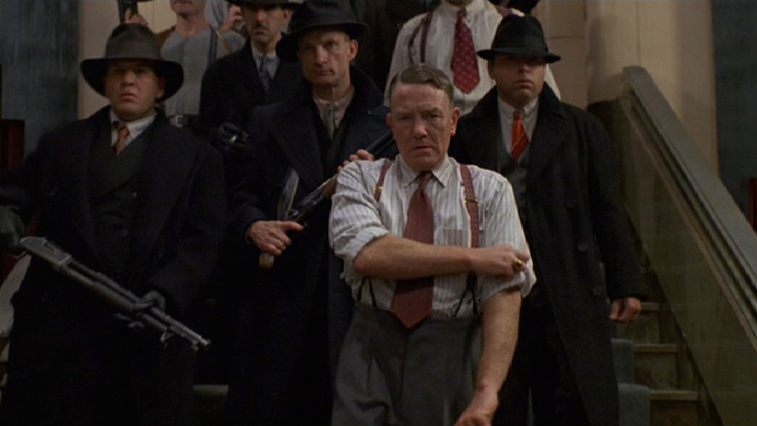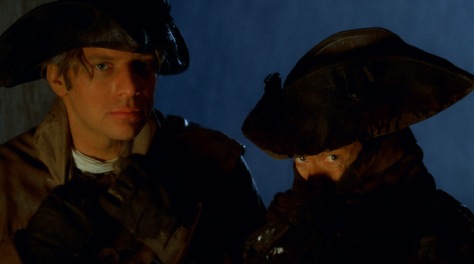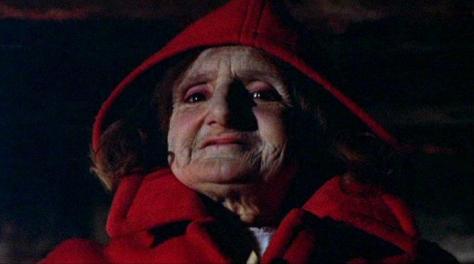By Dennis Hartley
(Originally posted on Digby’s Hullabaloo on November 9, 2019)

Stanley Kubrick once stated, “I like a slow start, the start that goes under the audience’s skin and involves them so that they can appreciate grace notes and soft tones and don’t have to be pounded over the head with plot points and suspense hooks.” I suspect that Edward Norton, the writer/director/star of Motherless Brooklyn, enthusiastically concurs.
Norton’s film, adapted from Jonathan Lethem’s eponymous 1999 detective novel, qualifies as one such “slow starter”. At 144 minutes, it gives the audience ample time to ponder grace notes and soft tones; and (for the most part) avoids pounding you over the head with plot points and suspense hooks. Movies of that sort are hard to find these days.
I have not read the source novel; but I gather it is a complex murder mystery set in contemporary New York, with a largely internalized narrative from the perspective of its protagonist. Norton shifts the time period to the 1950s and channels most of the complexity into his performance as Lionel Essrog, a private dick afflicted by Tourette Syndrome. Naturally, he awards himself a juicy character role and tackles it with aplomb.
Lionel works as a P.I. for an agency headed by hard-boiled war vet Frank Minna (Bruce Willis). Minna is not only Lionel’s boss, but his best friend and mentor. Minna is one of the few people who doesn’t (whether consciously or unconsciously) stigmatize him for his uncontrollable physical and vocal tics (Lionel’s co-workers call him “Freakshow”). Minna recognizes that certain ancillaries of Lionel’s condition- to wit, a photographic memory and an ability to laser in on minutiae are ideal attributes for a private investigator.
One day, Minna asks Lionel and another P.I. from the agency to accompany him for a meet he has with some shadowy individuals. Lionel is instructed to listen in on the conversation from a phone booth while his partner stands by in the car. Minna keeps his cards close to his vest as to what it’s all about but makes it obvious that he has the pair of them tagging along as backup in case the meeting goes south in a hurry. Long story short, the meeting goes south in a hurry, and before the P.I.s can intercede Minna ends up dead.
The mystery is afoot (if it’s a yard). Lionel navigates a crooked maze of avarice and corruption that runs through smoky Harlem jazz clubs, Brooklyn tenement slums and straight to the rotten core of The Big Apple (I think I missed my calling as a pulp writer).
Frankly, the mystery (while absorbing) takes a backseat to the character study and the noir-ish 1950s atmosphere (helped by nice work from cinematographer Dick Pope, whose credits include many Mike Leigh films as well as the 1990 cult favorite Dark City).
But Lionel is certainly an interesting study, augmented by a committed performance from Norton, who is one of the finest actors of his generation. As a director, Norton is rock solid if not particularly stylish. Also in the cast: Alec Baldwin (as a very Trumpian New York real estate developer), Bobby Cannavale, Willem Dafoe and Gugu Mbatha-Raw.
It’s tempting to dub this an East Coast Chinatown, but it doesn’t “get under your skin” the same way. Still, Norton deserves credit for going against the grain of conventional modern Hollywood “product”, by making us lean in again and pay attention to the details.
…one more thing
So you’re not up for schlepping to the theater? Here are five vintage New York City-based noirs and neo-noirs that are well worth your while and readily available for home viewing:

Dog Day Afternoon (available for rent from Warner Brothers On Demand) – As far as oppressively humid hostage dramas go, this 1975 “true crime” classic from the late Sidney Lumet easily out-sops the competition. The air conditioning may be off, but Al Pacino is definitely “on” in his absolutely brilliant portrayal of John Wojtowicz (“Sonny Wortzik” in the film), whose botched attempt to rob a Brooklyn bank turned into a dangerous hostage crisis and a twisted media circus (the desperate Wojtowicz was trying to finance his lover’s sex-change operation).
Even though he had already done the first two Godfather films, this was the performance that put Pacino on the map. John Cazale is both scary and heartbreaking in his role as Sonny’s dim-witted “muscle”. Keep an eye out for Chris Sarandon’s memorable cameo. Frank Pierson’s tight screenplay was based on articles by P.F. Kluge and Thomas Moore.

Killer’s Kiss (Criterion Collection Blu-ray) – It’s been fashionable over the years for critics and film historians to marginalize Stanley Kubrick’s 1955 noir as a “lesser” or “experimental” work by the director, but I beg to differ. The most common criticism leveled at the film is that it has a weak narrative. On this point, I tend to agree; it’s an original story and screenplay by Kubrick, who was a screenwriting neophyte at the time.
But when you consider other elements that go into “classic” noir, like mood, atmosphere and the expressionistic use of light and shadow, Killer’s Kiss has all that in spades, and is one of the better noirs of the 1950s.
There are two things I find fascinating about this film. First, I marvel at how ‘contemporary’ it looks; it doesn’t feel as dated as most films of the era (or could indicate how forward-thinking Kubrick was in terms of technique). This is due in part to the naturalistic location photography, which serves as an immersive time capsule of New York City’s street life circa 1955 (much the same way that Jules Dassin’s 1948 documentary-style noir, The Naked City preserves the NYC milieu of the late 1940s).
Second, this was a privately financed indie, so Kubrick (who served as director, writer, photographer and editor) was not beholden to any studio expectations. Hence, he was free to play around a bit with film making conventions of the time (several scenes are eerily prescient of future work).

Sweet Smell of Success (available on TCM On Demand) – Tony Curtis gives a knockout performance in this hard-hitting 1957 drama as a smarmy press agent who shamelessly sucks up to Burt Lancaster’s JJ Hunsecker, a powerful NYC entertainment columnist who can launch (or sabotage) show biz careers with a flick of his poison pen (Lancaster’s odious, acid-tongued character was a thinly-disguised take on the reviled, Red-baiting gossip-monger Walter Winchell).
Although it was made over 60 years ago, the film retains its edge and remains one of the most vicious and cynical ruminations on America’s obsession with fame and celebrity. Alexander Mackendrick directed, and the sharp Clifford Odets/Ernest Lehman screenplay veritably drips with venom. James Wong Howe’s cinematography (and use of various New York City locales) is outstanding. Lots of quotable lines; Barry Levinson paid homage in his 1982 film Diner, with a character who is obsessed with the film and drops in and out of scenes, incessantly quoting the dialogue.

The Taking of Pelham, 1-2-3 (available on Hitz and Prime Video) – In Joseph Sargent’s gritty, suspenseful 1974 thriller, Robert Shaw leads a team of bow-tied, mustachioed and bespectacled hijackers who take control of a New York City subway train, seize hostages and demand $1 million in ransom from the city. If the ransom does not arrive in precisely 1 hour, passengers will be executed at the rate of one per minute until the money appears.
As city officials scramble to scare up the loot, a tense cat-and-mouse dialog is established (via 2-way radio) between Shaw’s single-minded sociopath and a typically rumpled and put-upon Walter Matthau as a wry Transit Police lieutenant. Peter Stone’s sharp screenplay (adapted from John Godey’s novel) is rich in characterization; most memorable for being chock full of New York City “attitude” (every character in the film down to the smallest bit part is soaking in it).

Taxi Driver (available on Netflix) – Equal parts film noir, character study and sociopolitical commentary, this was one of the most important (if disturbing) films to emerge from the American film renaissance of the 1970s, due in no small part to the artistic trifecta of directing, writing and acting talents involved (Martin Scorsese, Paul Schrader, and Robert De Niro, respectively).
De Niro plays alienated Vietnam vet Travis Bickle, who takes a night job as a cabbie. Prowling New York City’s meanest streets, Travis kills time between fares fantasizing about methods he might use to eradicate the seedy milieu he observes night after night to jibe with his exacting world view of How Things Should Be. It’s truly unnerving to watch as it becomes more and more clear that Travis is the proverbial ticking time bomb. His eventual homicidal catharsis still has the power to shock and is not for the squeamish.
The outstanding supporting cast includes a then-teenage Jodie Foster (nominated for an Oscar), Harvey Keitel, Peter Boyle, Cybill Shepherd and Albert Brooks. The film’s memorable score is by the late Bernard Herrmann (it was one of his final projects).


































